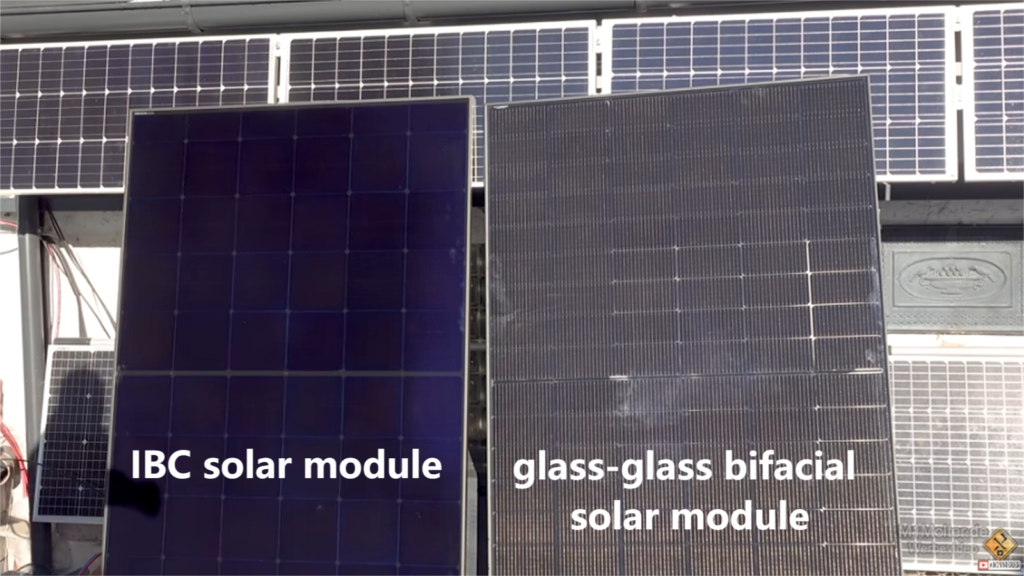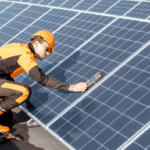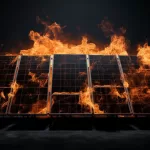Table of Contents
Introduction: The Importance of PV Module Performance in Low-Light Conditions
As the demand for renewable energy continues to rise, solar technology is constantly evolving, driving the rapid development of diverse module solutions.
In winter or low-light environments, choosing the most suitable photovoltaic module is key to enhancing overall system performance and maximizing return on investment.
Among the many available technologies, IBC (Interdigitated Back Contact) solar modules have gained increasing market attention for their high conversion efficiency and excellent low-light response. In comparison, traditional bifacial glass-glass modules offer unique advantages in specific settings thanks to their dual-sided power generation structure. As a result, the choice between “IBC or bifacial modules” has become a focal point for both the industry and end users.
To systematically assess performance differences between these technologies under real-world winter conditions, the well-known solar expert M1Molter (active on YouTube) conducted a two-week field test comparing Maysun Solar’s 430W IBC full-black module and a bifacial full-black module of the same power rating.
The test covered a range of typical winter scenarios, including full sunlight and cloudy conditions with low irradiance, focusing on the performance differences between IBC and bifacial modules. Based on actual data, the study further examined the distinctions between the two types.
This article presents a comprehensive analysis of the energy output of IBC and bifacial glass-glass modules under low-light conditions, using detailed test results and real application scenarios to offer targeted guidance for choosing the right module — helping users make informed, science-based decisions in a complex market landscape.
Technology Overview: Structure and Characteristics of IBC and Bifacial Glass-Glass Modules
As photovoltaic module technology continues to evolve, optimizing structures and materials has become a key path to improving overall performance. IBC solar modules and bifacial glass-glass modules are two mainstream solutions, each adopting distinct cell structures and encapsulation methods that offer different advantages depending on the application scenario.
IBC Full-Black Modules
The Interdigitated Back Contact (IBC) technology places all electrodes on the back of the solar cell, eliminating front-side metal shading, increasing light absorption area, and enhancing power conversion efficiency.
Despite using single-glass encapsulation, Maysun Solar’s IBC full-black modules come with a 25-year warranty, reflecting the manufacturer’s confidence in the product’s durability and long-term performance stability.
Thanks to the back-contact design and high output efficiency, IBC modules deliver excellent stability and power generation performance under low-light conditions, making them ideal for residential and commercial projects with high energy efficiency requirements.

Efficiency: 21-22.5%
Dimensions (L × W × H): 1722 x 1134 x 30 mm
Weight: 20.8kg
Packaging:36 pieces/pallet, 936 pcs/40'HQ
Warranty: 25-year performance warranty

Efficiency: 21.7-23.1%
Dimensions (L × W × H): 1722 x 1134 x 30 mm
Weight: 20.8kg
Packaging: 36 pcs/pallet, 936 pcs/40'HQ
Warranty: 25-year product and performance warranty

Efficiency: 21.5-23.2%
Dimensions (L × W × H): 2278 x 1134 x 30 mm
Weight: 27.5 kg
Packaging: 36 pcs/pallet, 720 pcs/40'HQ
Warranty: 25-year product and performance warranty
Bifacial Glass-Glass Modules
Bifacial glass-glass modules use high-strength, high-transparency double-glass encapsulation to protect solar cells, enhancing both structural protection and environmental resistance.
This design supports dual-sided power generation, allowing the modules to absorb direct, diffused, and reflected sunlight from both the front and rear sides, thereby increasing overall energy capture efficiency.
Additionally, bifacial glass-glass modules typically offer a warranty of up to 30 years, ensuring long-term stable operation of the system.
Thanks to bifacial energy generation and excellent environmental durability, these modules demonstrate higher power output potential and system reliability in high-albedo ground surfaces and harsh weather conditions.
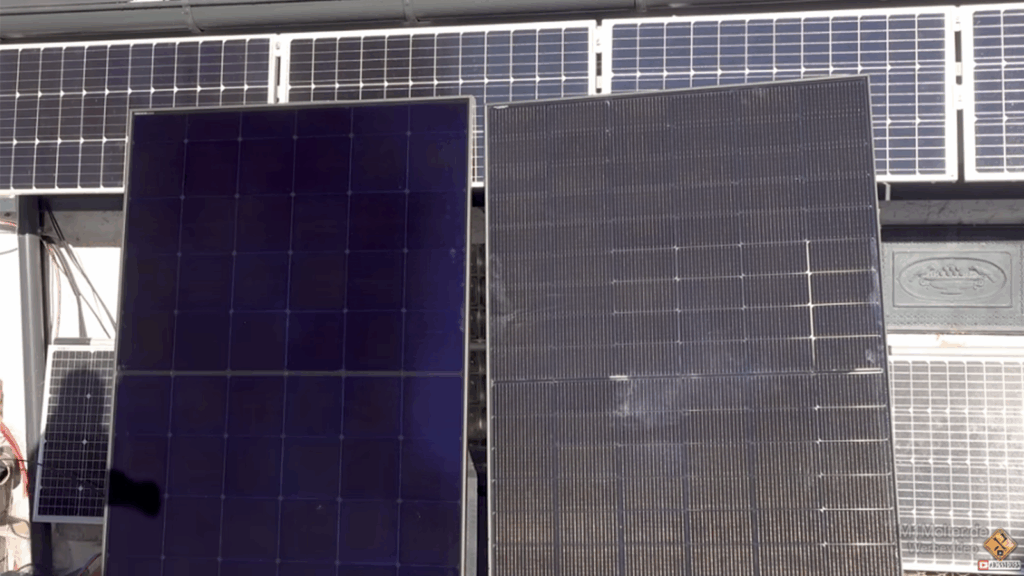
Test Environment and Methodology: Field Comparison Between IBC and Bifacial Modules
Test Environment Setup
To thoroughly evaluate the real-world performance of photovoltaic modules under low-light conditions, this test was specifically designed to simulate typical winter lighting scenarios, including both full-day direct sunlight and cloudy conditions without direct sunlight.
The objective was to capture the variations in power generation performance across different weather conditions, ensuring fair and accurate baseline data for comparative analysis.
With strict environmental controls in place, the results are able to more accurately reflect the performance differences between IBC and bifacial modules under actual application conditions.
Testing Method and Measurement Tools
To ensure the comparability and accuracy of the data, the following standardized procedures were followed during the test:
-
Consistent Installation Conditions
Both module types were installed at the same angle, orientation, and mounting setup to ensure identical exposure to sunlight. -
Real-Time Power Generation Monitoring
Precision measurement devices were used to record the instantaneous power output (in watts) and cumulative energy generation (in kilowatt-hours) of each module in real time. -
Environmental Parameter Monitoring
Key external factors such as irradiance intensity and ambient temperature were monitored throughout the test to prevent environmental variations from affecting the results. -
Portable Power Station for Auxiliary Measurement
A portable power station was used as a supplementary measurement tool to record and verify the modules’ output under different weather conditions in real time.
Through these standardized procedures, the field test provided a solid and reliable data foundation for subsequent performance analysis.
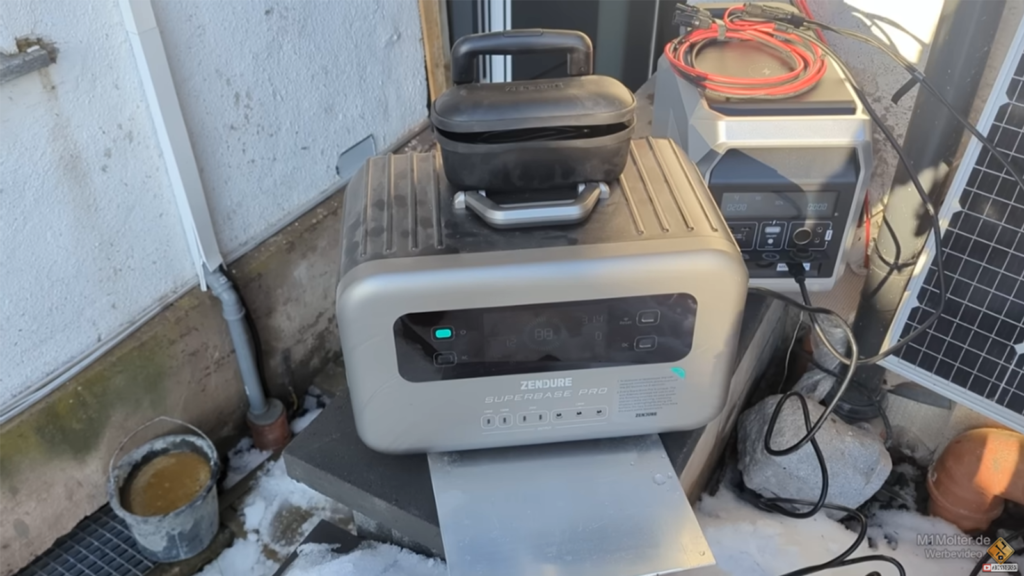
IBC vs. Bifacial Modules: Test Data Analysis and Performance Comparison
1. Test Procedure
Initial Test (Under Full Sunlight Conditions in Winter)
During the initial test conducted under full winter sunlight conditions, the 430W bifacial glass-glass solar panel delivered a stable output power of 283 watts, with a peak power reaching 315 watts.
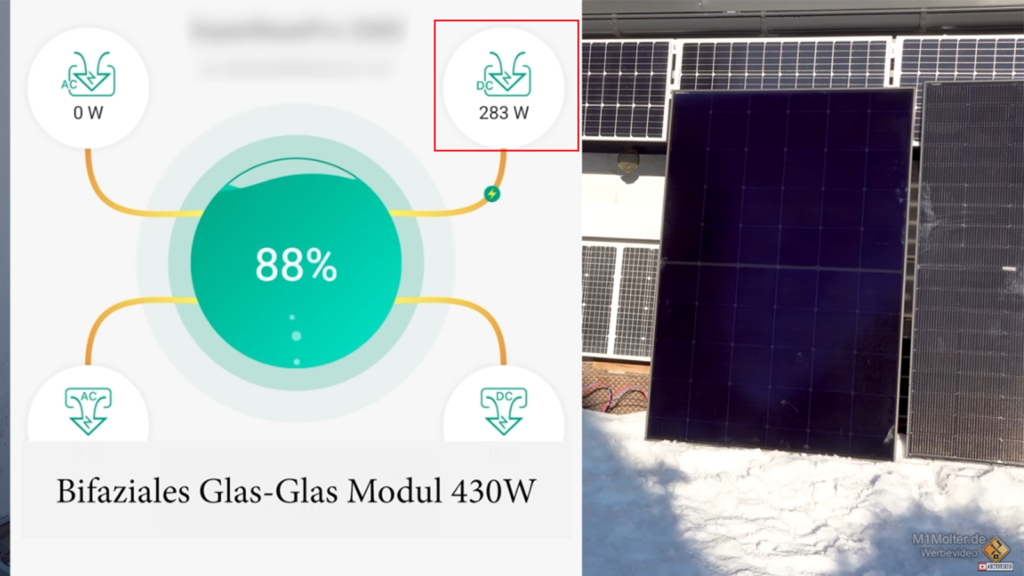
By comparison, the 430W IBC full-black solar panel delivered a stable output power of approximately 310 watts under the same conditions, with a peak power also reaching 310 watts.
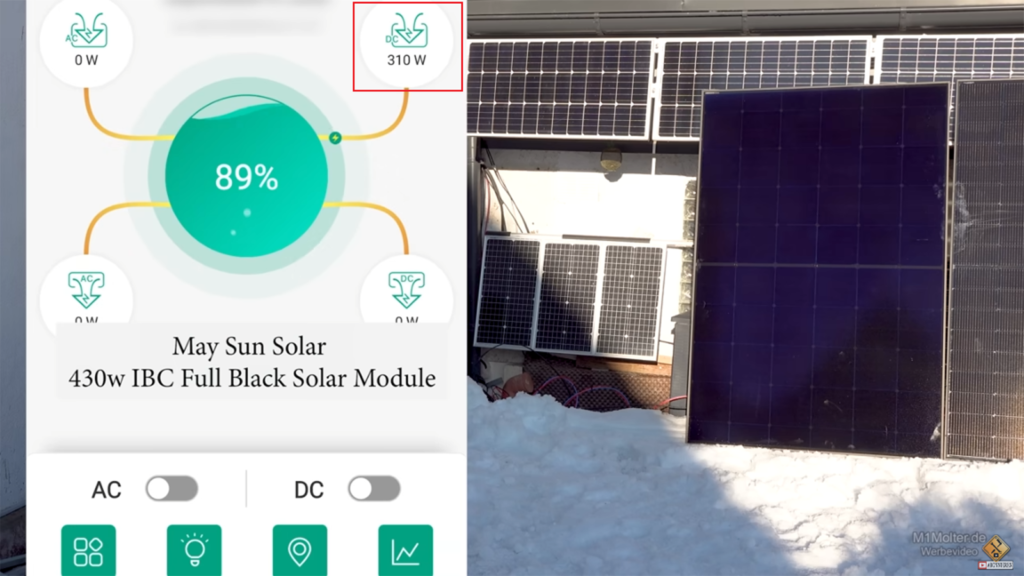
The IBC module reduces front-side shading through back-contact technology, increasing the effective light absorption area, which allows it to maintain a high stable output power, even when the angle of sunlight changes significantly in winter.
Long-Term Test (About Two Weeks, Including Extreme Weather Conditions)
During the approximately two-week long-term test under extreme weather conditions, the 430W IBC full-black solar panel accumulated a total energy generation of 2.6 kWh, while the 430W bifacial glass-glass solar panel generated 2.16 kWh over the same period.
In frequent cloudy or low-light conditions, choosing the IBC module with better low-light response helps improve the overall annual power generation and stability of returns.
2. Performance Comparison
Power Output Comparison Under Full Sunlight Conditions in Winter
Based on the test data:
-
The 430W IBC full-black solar panel delivered a stable output power of 310 watts under full winter sunlight conditions, with a peak power of 310 watts.
-
The 430W bifacial glass-glass module delivered a stable output power of 283 watts, with a peak power of 315 watts.
This comparison demonstrates that under low-light conditions, the IBC full-black module has a clear performance advantage over the bifacial glass-glass module.
While bifacial modules perform well in environments with sufficient sunlight and good reflective conditions, in winter with low-angle sunlight and cloudy, low-light conditions, the insufficient reflected light limits the rear-side gain, thus the performance improvement is not as significant as with the IBC module.
Long-Term Output Power and Energy Generation Comparison (About Two Weeks, Including Low-Light Conditions)
During the two-week test period (including winter low-light weather):
-
The 430W IBC full-black solar panel generated a total of 2.6 kWh.
-
The 430W bifacial glass-glass solar panel generated 2.16 kWh over the same period.
Overall, the 430W IBC full-black solar panel generated about 20% more energy than the bifacial glass-glass module, further indicating its superior performance in low-light conditions.
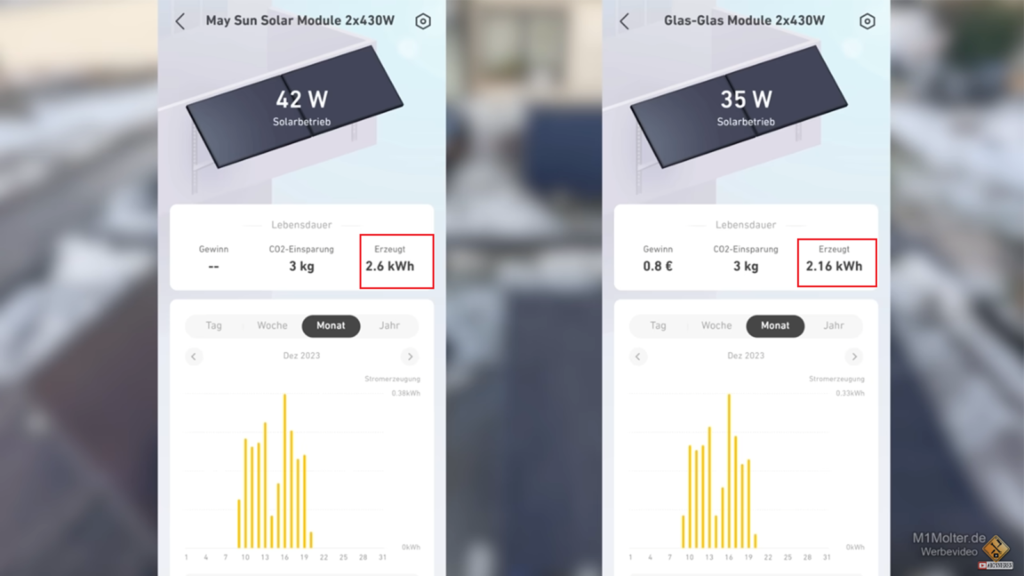
In scenarios with limited space and valuable roof resources, prioritizing IBC modules with higher power generation efficiency per unit area can effectively increase the overall project return on investment.
Peak Output Power Comparison on Specific Test Day (December 16th)
On a specific test day (around December 16th):
-
The peak output power of the 430W IBC full-black solar panel reached 117 watts.
-
The peak output power of the 430W bifacial glass-glass solar panel was 100 watts.
This demonstrates that under extremely low-light conditions, the IBC full-black module can still maintain a high output power, providing a performance advantage of about 17%.
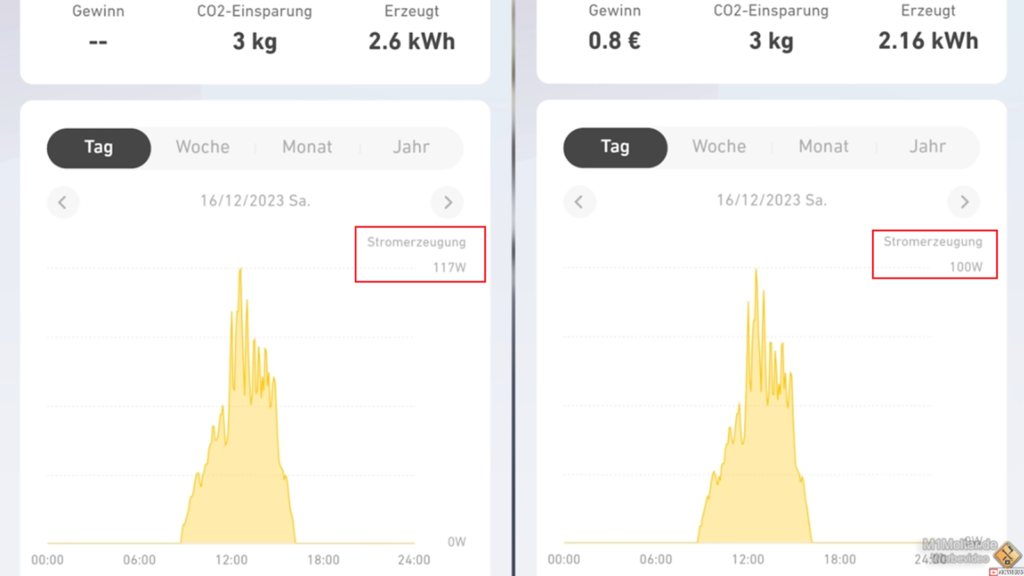
In winter, during cloudy days or low-light periods such as early mornings and evenings, IBC modules can utilize the faintest light to achieve higher energy conversion, which is particularly important in areas with limited sunlight hours.
The comparative data from various test conditions clearly shows that in low-light environments, the 430W IBC full-black solar panel outperforms the 430W bifacial glass-glass solar panel in both power output and energy generation. Especially under low-light conditions, IBC technology demonstrates higher efficiency and broader application potential.
When deploying photovoltaic systems in areas with long winters, frequent cloudy days, or poor ground reflection conditions, selecting IBC modules will help increase annual energy generation and optimize the investment return structure.
IBC vs. Bifacial Modules (bifazial module aesthetics): Design, Aesthetics, and Additional Performance Considerations
Elegant Full-Black Design and Performance Enhancement
The IBC full-black solar module features a no-busbar back-contact design, eliminating the traditional metal ribbon structure and presenting a simple, unified full-black appearance. This design makes it easier to integrate into various architectural styles. Not only does it enhance the visual effect, but by reducing light shading, it increases the light-capturing area by 2.5%, improving the photoelectric conversion efficiency. It is particularly suitable for residential and commercial rooftops with high aesthetic requirements.
Glare-Free and Eco-Friendly Design
The 1.7% low reflectivity of the IBC full-black modules significantly reduces potential glare pollution. The low-reflectivity design ensures minimal impact on the surrounding environment, making it especially suitable for dense residential areas or commercial buildings, balancing aesthetics and environmental friendliness.
Outstanding Low-Light Performance and Investment Return
This module excels in low-light environments, making it particularly ideal for the low-radiation winter sunlight conditions in Europe. Tests show that over 10 days, the energy generation was 20% higher than that of TOPCon modules. Even on cloudy or low-light days, the IBC full-black module can still deliver stable, efficient output, providing better investment returns for users.
Long-Term Stability and Warranty
The IBC full-black module comes with a 25-year product warranty and a low temperature coefficient (-0.29%/°C). This feature ensures the long-term stability and high power generation efficiency of the module in various environments, guaranteeing reliable returns for users over the long term.
Selection Guide: How to Choose Between Bifacial Modules and IBC?
Selection Guide: Considering Multiple Factors
When choosing solar modules suitable for winter or low-light conditions, several factors need to be considered in addition to performance, cost, aesthetic design, and long-term benefits. The underlying technology is a key consideration. Based on our comparative testing and the trends in the European photovoltaic market, the following suggestions can help you make a more informed decision.
1. Maximizing Energy Capture: Suitable for Low-Light Environments
For areas with limited sunlight or frequent rainy weather, IBC full-black modules are the ideal choice. Their low-light response capability outperforms traditional monofacial modules, enabling them to capture more sunlight in conditions of insufficient light, providing higher photoelectric conversion efficiency.
The advantage of IBC technology is that it reduces front-side shading, increasing the effective absorption of light, making it particularly suitable for low-light conditions such as short winter days and cloudy weather. According to an EPIA report, IBC modules increase energy generation by 20%-30% in low-light environments, particularly ideal for winter climates in Northern Europe and Scandinavia.
2. Performance First: Efficient Operation, Ensuring Energy Generation
Bifacial modules, with their dual-sided power generation design, can capture more light in environments with strong light reflection (such as snow, ice, or desert regions), thus increasing power generation. However, IBC modules excel in low-light conditions, especially in winter with low-angle sunlight and cloudy weather. In these conditions, the rear-side gain of bifacial modules is limited, while IBC modules, with their busbar-free design, can better absorb light energy from low-light environments.
According to a Fraunhofer ISE study, IBC modules offer more stable performance under winter cloudy days and low-angle sunlight than bifacial modules, especially in Northern Europe and Scandinavian regions, where low-radiation environments give IBC technology a distinct advantage.
3. Investment Return: Faster Payback and Higher Long-Term Returns
While the initial investment in IBC full-black modules may be higher than traditional solar modules, their advantages in power generation efficiency, long-term stability, and lower maintenance costs lead to a shorter payback period and higher long-term returns. According to SolarPower Europe data, using IBC modules can pay back the investment in 5-7 years and achieve higher investment returns within 20 years across most European countries. In contrast, while bifacial modules can increase energy generation in specific environments, their higher initial investment and relatively lower efficiency improvement lead to a longer payback period.
4. Aesthetics and Performance Combined: Balancing Beauty and Function
In addition to excellent power generation performance, the all-black design of IBC full-black modules gives them a modern look that blends harmoniously with the roof and surrounding environment. For modern residential and commercial buildings, IBC full-black modules provide a perfect solution. Unlike bifacial modules, IBC modules have a simpler, more unified design, making them better suited for projects with higher aesthetic requirements.
5. Sustainability: Supporting the Green Energy Transition
Choosing IBC full-black modules is not only selecting a highly efficient solar solution but also investing in sustainability. According to the European Environment Agency (EEA), photovoltaic systems are becoming an important part of Europe’s green energy transition, especially in countries like Germany, France, and Italy, which are accelerating the use of high-efficiency solar modules. The high efficiency and long-term stability of IBC modules not only provide users with a sustainable power generation solution but also contribute to the energy transition across Europe.
Conclusion: Scientific Selection Guide Based on the Differences Between IBC and Bifacial Modules
When choosing photovoltaic modules suitable for winter and low-light conditions, both IBC full-black modules and bifacial glass modules demonstrate significant advantages. Based on our test results, the IBC full-black module provides higher stable output power and greater energy generation under low-light conditions. In the tests, the IBC full-black module showed a stable output power of 310 watts under full winter sunlight conditions, while the bifacial glass-glass module had a stable output power of 283 watts. Additionally, in the long-term test, the IBC module’s cumulative energy generation was 20% higher than the bifacial module.
These data indicate that the IBC full-black module has a clear performance advantage under low-light and winter conditions, making it especially suitable for areas with frequent cloudy weather and weak sunlight. Its back-contact design effectively reduces light shading and enhances photoelectric conversion efficiency, allowing it to operate efficiently even in cold and low-light environments.
In comparison, while the bifacial glass module performs better in environments with strong reflected light, its rear-side gain is limited under low-light conditions, making the performance improvement less significant than that of the IBC full-black module. The 30-year warranty and higher durability of bifacial modules make them an excellent choice for long-term investment returns, particularly for users who can tolerate a longer payback period.
Overall, IBC full-black modules are better suited for users located in low-light areas or regions with short winter daylight hours, offering a faster payback period and higher power generation efficiency. Bifacial glass modules, on the other hand, are ideal for users who require higher long-term stability and warranty periods, especially in areas with strong reflected light, where they can effectively increase energy generation.
Since 2008, Maysun Solar has been dedicated to producing high-quality photovoltaic modules. Our range of solar panels, including IBC, HJT and TOPCon panels, and balcony solar stations, are manufactured using advanced technology and offer excellent performance and guaranteed quality. Maysun Solar has successfully established offices and warehouses in many countries and built long-term partnerships with top installers! For the latest quotes on solar panels or any photovoltaic-related inquiries, please contact us. We are committed to serving you, and our products provide reliable assurance.
Reference:
Recommend Reading:
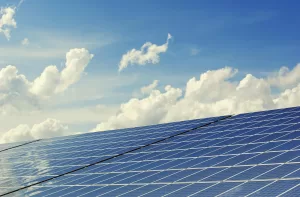
Which solar modules perform better under high summer temperatures?
Can high summer temperatures reduce the power generation efficiency of solar modules? This article compares the performance of HJT, TOPCon, and IBC modules under high temperatures to help you make informed choices and optimize your return on investment.

Structural Risks and Component Adaptation Strategies for Commercial PV Deployment under Extreme Weather Conditions
A comprehensive analysis of the structural risks and component configuration strategies for commercial and industrial PV systems under extreme weather conditions, helping businesses enhance system stability and long-term energy yield.

How Can Photovoltaics Help Businesses Cut Peak Electricity Costs During Summer Price Spikes?
How Can Businesses Use Photovoltaic Systems to Address Summer Electricity Price Peaks? This article provides cost-saving calculations, suitability conditions, and technical selection recommendations.

How to Detect Hotspots and PID Effects in PV Modules to Prevent Long-Term Losses?
How to identify and respond to hotspots and PID effects in PV modules? This article focuses on the European market, combining detection technologies, real-world cases, and protection strategies to provide developers and investors with reliable loss warnings and yield protection solutions.

How to Choose the Most Suitable Solar Panels for Commercial and Industrial Use in 2025
How can commercial and industrial projects choose the right solar panels in 2025?
This article provides a systematic comparison of mainstream panel types such as TOPCon, HJT, and IBC, analyzing their advantages, disadvantages, and suitable applications. It aims to help businesses make accurate selections based on specific project conditions, thereby improving long-term energy output and return on investment.

After the Iberian Blackout How Can Enterprises Reshape Their Energy Security Systems
The 2025 Iberian blackout drew widespread attention across Europe. This article analyzes grid vulnerability, enterprise energy risks, and the deployment path of “solar + storage + EMS” systems to help businesses build a controllable and secure energy structure.

